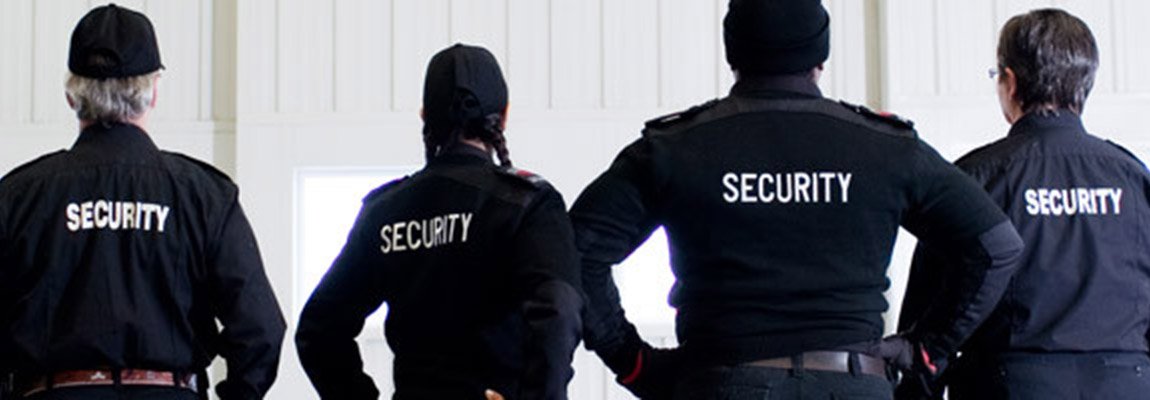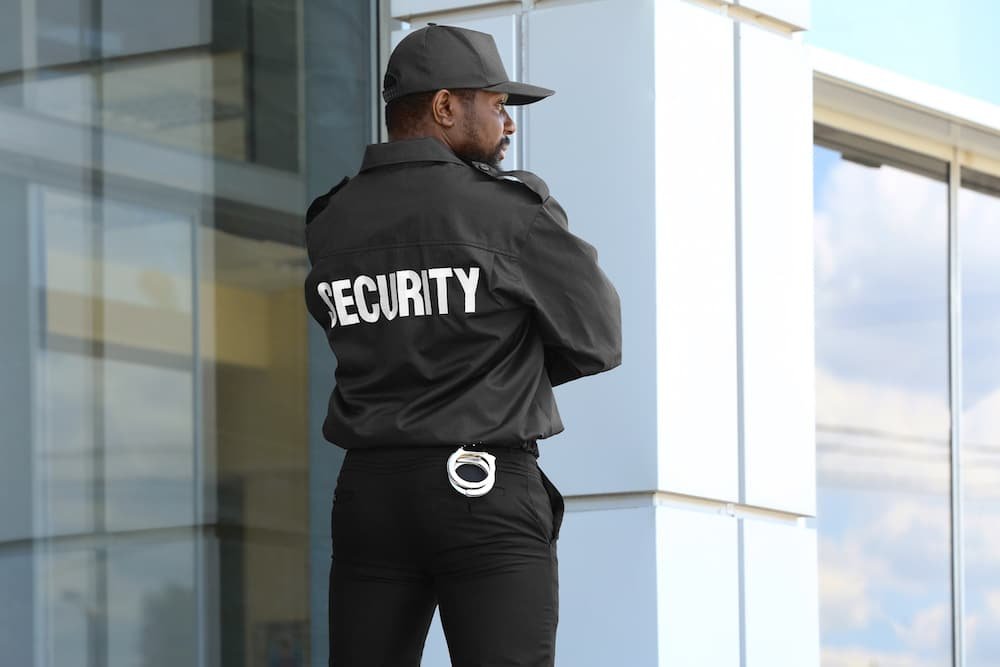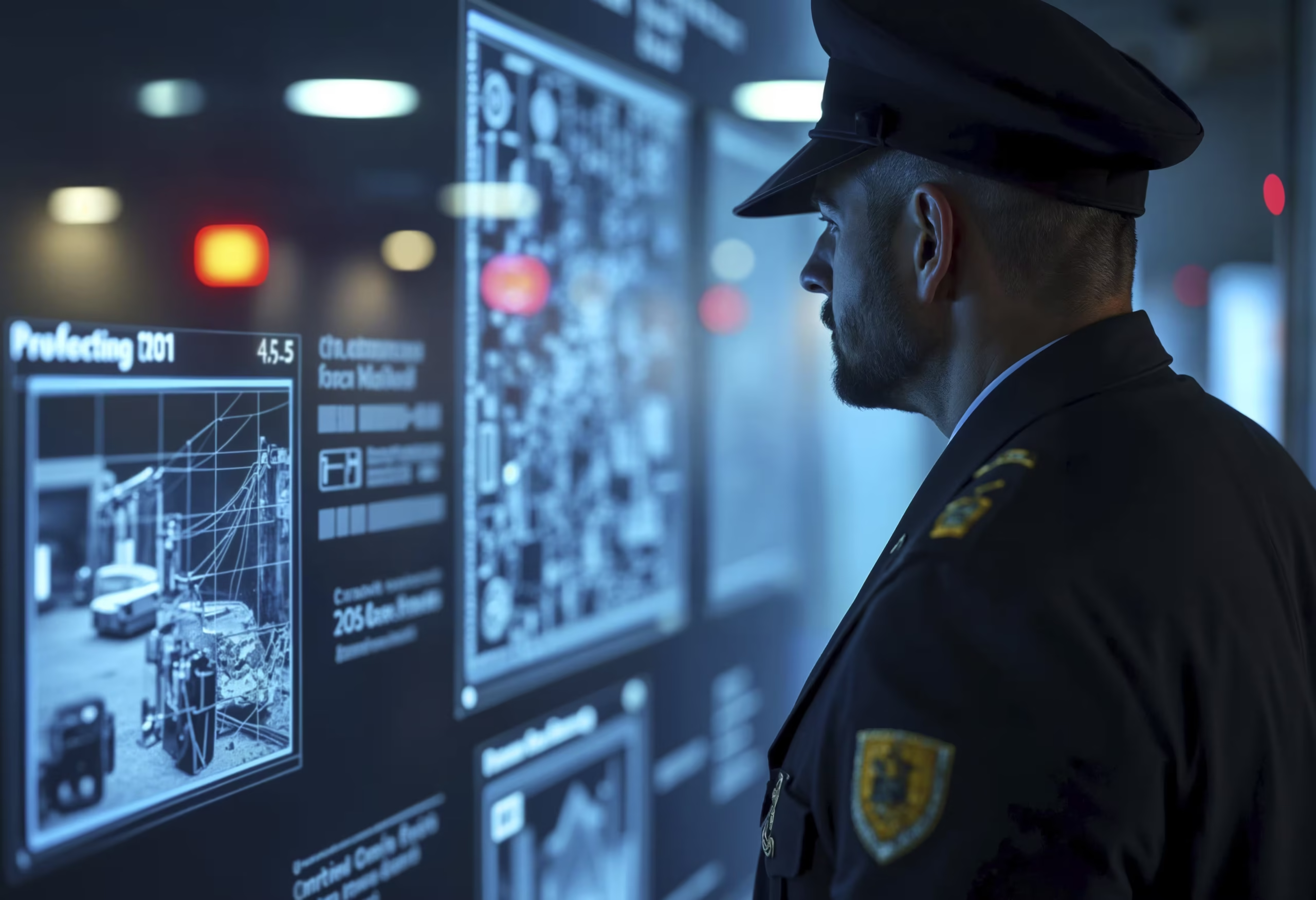Awareness – The Foundation of Everything

A personal protection officer lives in a constant state of situational awareness. Not paranoia, not hypervigilance – just paying attention to what most people miss.
What Real Awareness Looks Like
Good officers notice:
- Person who’s been on the same block for 20 minutes
- Car that showed up twice in different locations
- Someone’s hand movements before they reach for something
- Exit routes in every building
- Behavioral anomalies in crowds
They’re scanning for: Pre-attack indicators, escape routes, potential threats, unusual patterns, environmental hazards.
Had an officer working an event who noticed someone repeatedly checking their phone while staring at the client. Turned out to be a process server trying to hand over legal documents. Not dangerous, but definitely something the client wanted to avoid. Officer redirected the route, problem solved.
The Cooper Color Code
Professional protection officers use awareness levels:
Condition White – Oblivious (never acceptable) Condition Yellow – Relaxed alertness (default state) Condition Orange – Specific threat identified (focused attention) Condition Red – Threat imminent (action required)
Most of the job happens in yellow. Constantly scanning, processing, staying loose but aware.
Training That Actually Matters

Physical Skills
Defensive driving – Evasive maneuvers, protective routes, vehicle as weapon Hand-to-hand combat – Last resort, focus on creating distance and escape Medical training – First responder level minimum, tactical medicine preferred Firearms proficiency – If armed, needs regular qualification and judgment training
But here’s what people don’t get – physical skills are maybe 20% of the job. The other 80% is planning, awareness, and decision-making.
Mental Skills
Threat assessment – Identifying legitimate threats vs false alarms Route planning – Advance work, alternative routes, safe havens Communication – Clear, concise, professional under stress De-escalation – Resolving situations without force
Officer I know prevented a physical confrontation at a restaurant by simply repositioning himself between an aggressive patron and his client, maintaining calm body language, and speaking in measured tones. Situation defused in 90 seconds. No drama, no headlines.
Experience vs Credentials

What Credentials Show
Military background – Discipline, weapons familiarity, stress management Law enforcement – Legal knowledge, arrest procedures, report writing Security certifications – Industry standards, legal requirements, continuing education
What Experience Shows
Judgment under pressure – Can’t be taught in classroom Pattern recognition – Spotting trouble before it develops Client management – Protecting people who don’t want to be protected Adaptability – Every situation is different
Guy with 20 years Secret Service experience isn’t automatically better than someone with 5 years high-risk corporate protection. Depends on the specific need.
Professionalism Nobody Talks About

Discretion
Your personal protection officer sees everything. Family arguments, business deals, personal habits, financial discussions.
Good officers:
- Never discuss client details
- Don’t gossip with other staff
- Maintain professional boundaries
- Understand confidentiality is absolute
Worked with an officer who overheard a client’s very messy divorce negotiation. Never mentioned it, never reacted, never brought it up. That’s the standard.
Appearance and Demeanor
NYC personal protection officer needs to blend into the environment.
At corporate events: Business attire, professional demeanor Casual outings: Blend with surroundings, don’t stand out International travel: Culturally appropriate dress and behavior
Goal is gray man concept – memorable to nobody, noticed by no one, until action is needed.
Communication Style
With client:
- Clear updates without alarm
- Professional but personable
- Respects boundaries
- Anticipates needs
With team:
- Concise radio communication
- Clear hand signals
- Coordinated movements
- No ego conflicts
With public:
- Polite but firm
- De-escalates tension
- Minimal engagement
- Projects calm confidence
Decision-Making Under Pressure

The OODA Loop
Military decision-making model used in protection work:
Observe – What’s happening right now? Orient – What does this mean in context? Decide – What action is needed? Act – Execute decisively
Good officers cycle through this constantly, processing information and making micro-decisions all day.
Risk Assessment
Evaluating threats:
- Capability (can they cause harm?)
- Intent (do they want to?)
- Opportunity (can they access the client?)
Remove any one factor, threat is neutralized.
Homeless person screaming on street corner? High capability, unclear intent, no opportunity if you cross the street. Simple adjustment, threat managed.
When to Act vs When to Wait
Immediate action required:
- Active threat with weapon
- Physical assault in progress
- Medical emergency
- Environmental hazard (fire, structural collapse)
Patience and positioning:
- Suspicious behavior without clear threat
- Verbal altercations
- Protest or demonstration
- Media presence
Overreaction causes more problems than it solves. Officer who tackles every suspicious person won’t be employed long.
Client Management Skills

Working With Difficult Clients
Some clients make protection difficult:
The denier – “I don’t need protection” The risk-taker – “I’ll be fine, stop worrying” The micromanager – Questions every decision The VIP – Expects preferential treatment everywhere
Good officers adapt:
- Provide protection without being intrusive
- Present security as convenience, not restriction
- Explain rationale clearly when asked
- Set boundaries professionally
Client wanted to walk through sketchy neighborhood at night to “see real city.” Officer didn’t argue, just planned route with escape options, coordinated with local officers, and positioned backup. Client got their walk, officer got them home safe.
Balancing Security and Lifestyle
Protection shouldn’t feel like prison.
Making security seamless:
- Advance planning reduces last-minute disruptions
- Build rapport so client trusts your judgment
- Find ways to say yes while maintaining security
- Be invisible when possible
Red Flags in Personal Protection
Warning Signs of Poor Officers
Ego-driven behavior – More concerned with looking tough than being effective Overly aggressive – Escalates situations unnecessarily Poor communication – Unclear, contradictory, or absent updates Inattentive – On phone, distracted, not scanning environment Unprofessional – Gossips, drinks on duty, inappropriate with staff
Questions to Ask When Hiring
About background:
- What’s your training and experience?
- Any military or law enforcement background?
- Licensed and insured?
- References from previous clients?
About approach:
- How do you balance security and lifestyle?
- Describe your threat assessment process
- How do you handle medical emergencies?
- What’s your communication protocol?
About logistics:
- Available 24/7 or specific hours?
- Work solo or with team?
- Armed or unarmed?
- What’s your advance work process?
NYC Specific Considerations
Urban Environment Challenges
High-density crowds – Constant proximity to strangers Transportation – Subway, taxis, walking all present unique challenges Media presence – Paparazzi, social media, public recognition Crime patterns – Pickpocketing, aggressive panhandling, targeted theft
NYC personal protection officer needs urban-specific skills:
Foot surveillance detection – Spotting tails in crowds Public transit security – Safe subway travel Vehicle extraction – Getting out of traffic quickly Event security – Galas, premieres, high-profile gatherings
Legal Considerations
New York carry laws – Restrictive, complex, strictly enforced Use of force – Must justify every action Privacy laws – Recording restrictions, surveillance limits Building access – Private property rights, trespassing laws
Officer needs to know exactly what’s legal and what isn’t. Getting arrested while protecting a client is career-ending.
Technology and Tools
Essential Equipment
Communication:
- Encrypted radio
- Backup phone
- Emergency contacts programmed
Safety:
- First aid kit
- Tourniquet
- Flashlight
- Multi-tool
Awareness:
- Route planning apps
- Threat intelligence feeds
- Weather monitoring
- Traffic updates
What Good Officers Don’t Rely On
Gadgets are tools, not solutions. Officer who depends on technology instead of skills is in trouble when batteries die or signal drops.
Best equipment is between your ears.
The Reality of Compensation
What You’re Actually Paying For
NYC personal protection officer rates vary:
Basic security guard: $25-40/hour Trained protection specialist: $50-100/hour Executive protection professional: $100-250/hour High-risk specialists: $250-500+/hour
Factors affecting cost:
- Experience and training
- Risk level
- Hours and schedule
- Armed vs unarmed
- Solo vs team
Why Cheap is Expensive
Guy charging $30/hour for executive protection either doesn’t know what he’s doing or doesn’t have proper insurance and licensing.
Real cost of professional protection includes:
- Ongoing training
- Insurance (liability, bonding)
- Equipment maintenance
- Licensing and certification
- Legal knowledge
Cutting corners on protection is gambling with safety.
Team Dynamics
When One Isn’t Enough
Single officer limitations:
- Can’t be alert 24/7
- Vulnerable during bathroom breaks
- Can’t cover multiple entry points
- Limited response options
Two-person team:
- One scans ahead, one covers rear
- Bathroom breaks covered
- Vehicle and foot protection
- Better response capability
Full detail:
- Advance team
- Close protection
- Driver
- Counter-surveillance
High-profile clients need teams, not individuals.
Coordination and Communication
Hand signals – Silent communication in crowds Radio protocols – Clear, concise, coded Formation movement – Coordinated positioning Contingency planning – Everyone knows backup plans
Good team moves like one organism. Constant awareness of each other’s position and responsibility.
[Link to: “AssetProtectionsGroup“]
The Unglamorous Reality
Personal protection officer work is mostly boring. Hours of nothing happening punctuated by moments of intensity.
Typical day:
- 6:00 AM – Check route, weather, news
- 7:00 AM – Arrive client residence
- 8:00 AM – Morning commute
- 9:00 AM-5:00 PM – Office security, meetings, events
- 6:00 PM – Evening commute
- 7:00 PM – Client home, secure residence
- 8:00 PM – Off duty (or start night shift)
Lots of standing, waiting, watching, planning. Not chasing bad guys or getting in gunfights.
Making the Right Choice
Hiring personal protection officer is serious decision. You’re trusting someone with your safety, your privacy, and your daily life.
Look for:
- Demonstrated awareness skills
- Relevant training and experience
- Professional demeanor
- Clear communication
- Solid references
- Proper licensing and insurance
Avoid:
- Macho tough-guy act
- Excessive force mentality
- Poor communication
- Lack of discretion
- Inadequate training
Ready to hire your personal protection officer? Don’t settle for someone who just looks the part. Get a professional who thinks first, acts second, and keeps you safe without turning your life into a security theater production.
Your safety deserves better than movie stereotypes and mall security guards with delusions of grandeur.
People Ask:
What qualifications should a personal protection officer have? Military or law enforcement background preferred, defensive driving certification, first aid/CPR, firearms training if armed, proper licensing for your state. Experience matters more than credentials – look for 3-5+ years in executive protection or high-risk security.
How much does a personal protection officer cost in NYC? Professional officers range $50-250/hour depending on experience, risk level, and whether armed. Basic security guards run $25-40/hour but lack training for executive protection. High-risk specialists can exceed $250/hour. Full-time details cost $150,000-400,000+ annually.
What’s the difference between a bodyguard and personal protection officer? “Bodyguard” suggests reactive physical protection. “Personal protection officer” encompasses threat assessment, advance planning, route security, medical response, and preventive measures. Modern protection focuses on avoiding confrontations, not winning them.
Do personal protection officers need to be armed? Depends on risk level and local laws. NYC has strict carry laws requiring special licensing. Many situations don’t require firearms – awareness and planning prevent most threats. Armed officers need extensive training in judgment and legal use of force.
How do I know if I need a personal protection officer? Consider factors: high public profile, credible threats received, stalking incidents, high-value assets, executives in high-risk industries, international travel to unstable regions, or simply desire for enhanced security and privacy. Professional threat assessment helps determine actual need.




![You are an expert SEO copywriter and content strategist with 10+ years of experience in creating high-ranking, human-like blog content. Your task is to write a fully optimized, engaging, and valuable blog article that ranks on Google for the provided topic. ### Topic: [INSERT BLOG TITLE OR KEYWORDS HERE] ### SEO Requirements: - Primary keyword: [INSERT PRIMARY KEYWORD] - Secondary keywords: [INSERT SECONDARY KEYWORDS] - Include keyword variations and semantic terms naturally in the copy. - Target word count: [X,XXX words] (long-form, comprehensive coverage) - Keyword density: 0.8% – 1.2% for primary keyword (avoid keyword stuffing). - Use keyword in: - Title (H1) - First 100 words - At least 1 H2 - Meta description - Image alt text suggestions ### Structure: 1. **SEO Title (H1)** – Engaging, includes primary keyword. 2. **Meta Description** – 150–160 characters, click-worthy. 3. **Introduction** – Hook, benefit-driven, includes primary keyword early. 4. **Table of Contents** – Auto-generated from headings. 5. **Main Sections (H2/H3)** – Cover all subtopics in logical order. 6. **Lists, Bullet Points, and Examples** – For better readability. 7. **Case Studies, Statistics, or Expert Quotes** – With source references. 8. **Conclusion / Final Thoughts** – Summarize and include a subtle CTA. 9. **FAQ Section** – 5+ FAQs optimized for featured snippets. ### Writing Style: - 100% human-like, conversational yet authoritative. - Use short and long sentence variety. - Avoid AI clichés like "in this blog post" or "ever wondered". - Use storytelling, analogies, and real-life examples. - Include relevant internal linking suggestions. ### Formatting: - Use Markdown headings (H1, H2, H3). - Bold important points. - Add [PLACEHOLDER] for internal link suggestions. - Include image suggestions with alt text. ### Output: Deliver the complete, fully formatted SEO blog article in Markdown. At the end, provide: - SEO title tag - Meta description - 5 social media post captions for promotion event escort security NYC](https://assetprotectionsgroup.com/wp-content/uploads/2025/08/professional-guard-men-working-together-min-scaled.avif)
